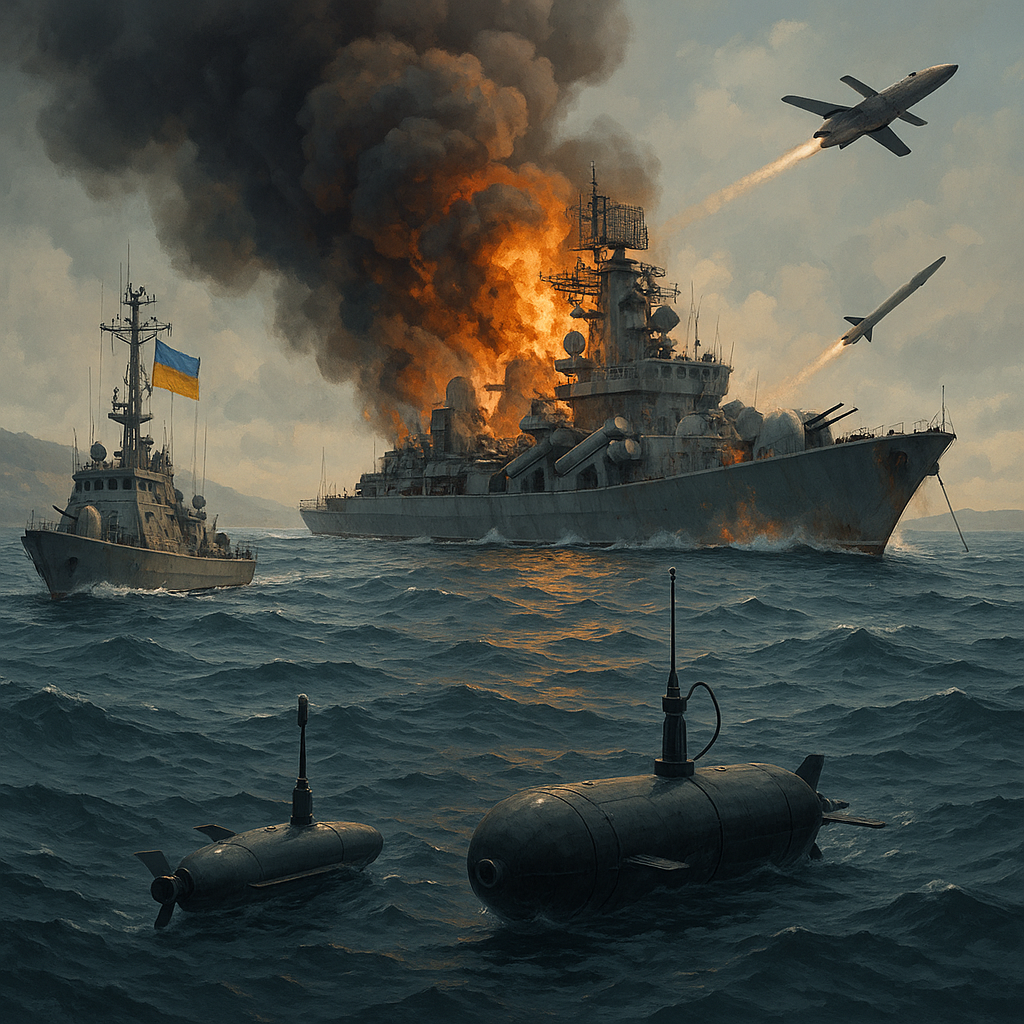Ukrainian troops have significantly weakened Russia’s maritime strength in the Black Sea. Despite being outnumbered, Ukrainian forces used unconventional methods to damage or destroy at least 24 Russian vessels since February 2022. The Ukrainian Navy, which previously operated with only a few warships and coastal defence vessels, faced limitations in engaging in conventional naval operations. However, through effective strategies and targeted attacks, they managed to deal substantial blows to Russian maritime power.
The flagship of Russia’s Black Sea Fleet, the Slava-Class cruiser ‘MOSKVA’, was among the vessels destroyed. This ship was previously considered a state-of-the-art air defence platform. The loss of such an important asset marked a significant setback for Russia’s naval operations in the region. Ukrainian forces employed sea drones, missile strikes, and other advanced technologies to execute these attacks. These tactics allowed them to strike Russian ships from a distance, avoiding direct naval confrontations. The use of remote-controlled drones, combined with satellite intelligence, enabled Ukrainian forces to carry out precision strikes on high-value targets without exposing their own vessels to danger.
Black Sea Underwater Drone Operations
Additionally, Ukrainian troops deployed underwater drones and anti-ship missiles to target Russian vessels near the Crimean coastline. These technologies helped them bypass Russian defences and inflict damage on larger warships. Ukrainian engineers also adapted commercial drones for military purposes, creating cost-effective solutions to enhance their strike capabilities. The Ukrainian Navy’s approach demonstrated how smaller forces could effectively challenge a superior naval power through innovative methods. The success of these operations highlighted the importance of technological adaptation and strategic planning in modern warfare.
Russian Fleet Relocation
Due to the persistent attacks by Ukrainian forces, Russia had to relocate its major naval assets. The Black Sea Fleet moved from Crimea’s Sevastopol to Novorossiyk, a city on Russia’s mainland in the Eastern Black Sea. This relocation indicates the impact of Ukrainian strikes on Russian operations. However, even after the relocation, Russian forces continue to carry out long-range missile strikes into Ukraine to support their ground troops.
The relocation of the Black Sea Fleet highlights the challenges Russia faces in maintaining control over the region. It also reflects the effectiveness of Ukrainian tactics in limiting Russian naval movements despite being at a numerical disadvantage. The move to Novorossiyk required Russia to adjust its logistics and defensive strategies. This shift added pressure on Russian supply lines, forcing them to rely more on land-based support systems.
Furthermore, the relocation increased the distance between Russian naval forces and the conflict zone. This change affected their ability to provide immediate support to ground offensives. Ukrainian strikes on supply depots and transport vessels further complicated Russian operations, creating additional vulnerabilities for the Black Sea Fleet.
Ongoing Conflict Dynamics
Despite Ukraine’s success in damaging Russian naval capabilities, the conflict remains intense. Russian forces still occupy around one-fifth of Ukrainian territory and continue to push forward. The casualty rates on both sides are reportedly high, showcasing the brutal nature of the ongoing war. The struggle for control over the Black Sea plays a crucial role in the broader conflict, with both sides seeking to assert dominance in the region.
The Black Sea serves as a strategic gateway for transporting military supplies and conducting maritime operations. The Ukrainian attacks have disrupted Russian supply routes, affecting their overall war efforts. Ukrainian forces have also targeted Russian oil tankers and cargo vessels, further complicating logistics. These actions have forced Russia to adopt new defensive measures and escort strategies to protect their fleet.
While Ukrainian operations have limited Russia’s naval capabilities, the conflict shows no signs of slowing down. Both sides continue to rely on different tactics to gain advantages on the battlefield. The situation remains complex, with the Black Sea serving as a critical battleground in the ongoing struggle for territorial control. The maritime power struggle is expected to play a pivotal role in shaping the future course of the conflict.

